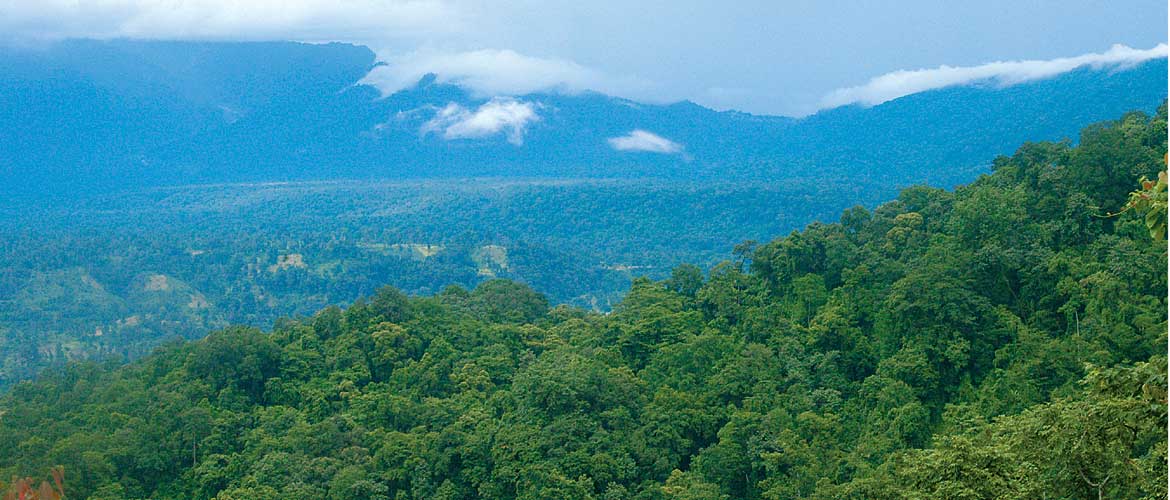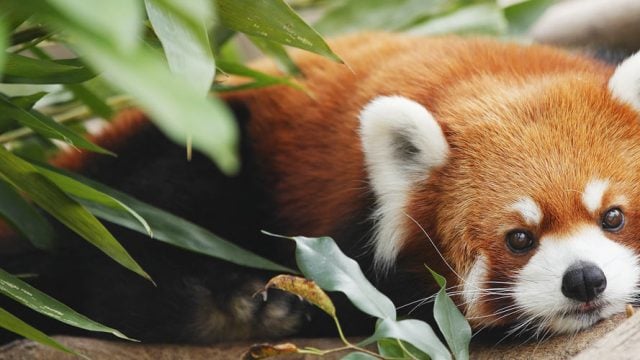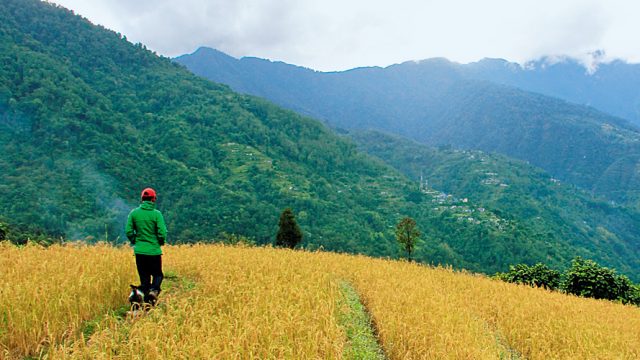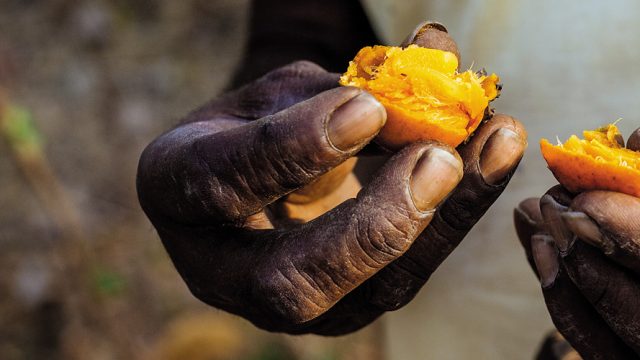A few kilometres from Miao town lies the Namdapha National Park – the largest protected
Spanning over varying elevations, the park harbours many natural habitats, making it one of the richest and most biodiverse parts of the subcontinent. Namdapha’s remote location, the Dapha Range (at a height of 5,000m) and the snow-fed rivers that crisscross the area have kept it well-protected and largely unexplored. It is one of the few parks in the country that must be traversed on foot; indeed after a point, there is simply no road to drive on. For nature and wildlife enthusiasts, this is perhaps the best experience offered anywhere in the country.
Established as part of Project Tiger in 1983, Namdapha National Park has a core area of 1808sq km and a buffer zone of 177sq km. The vegetation here changes from tropical moist forests at the lower altitudes to montane forests and alpine meadows at higher elevations. A number of rare orchid species can be found in the park, including the lady’s slipper, blue vandal, foxtail and dendrobium. The lower reaches have dense undergrowth and bamboo and canebrakes in abundance. With trees reaching as high as 150m, the jungle has a thick canopy. Needless to say, the forest at Namdapha is almost unnavigable and impenetrable, and hence makes quite a challenge for wildlife-watchers to spot animal or bird species. While this means that there will be no jeep safaris, nor lounging in a hammock while deer graze nearby, it certainly ensures an unparalleled nature experience.

Namdapha is home to many species of mammals, such as tiger, leopard (both clouded and snow), elephant, red panda, deer and even the endangered hoolock gibbon. The park is also home to several avian species, including white-bellied heron, snowy-throated babbler, white-winged wood duck, pied falconet, fulvettas, scimitar babblers and five species of hornbills.
Namdapha boasts a variety of butterfly species, such as the koh-i-noor, red caliph, cruiser, wizard and fluffy tit.
The entrance to Namdapha is located close to the town of Miao. After you drive past the entry gate, it’s a 22km drive to the campsite of Deban, set up by the forest department. It serves as the only hotel to stay in, unless you choose to camp at one of the designated campsites in the forest. Deban is the farthest motorable point as well.
Things to See & Do
Deban
Located on the northern banks of the Noa-Dihing river, Deban is an excellent base for exploring Namdapha. The site is a haven for naturalists, offering plenty of birding opportunities. Visitors will be able to spot little and slaty-backed forktails, scarlet minivets, lesser and greater yellownape woodpeckers and perhaps even the red-tailed minla and collared treepie. In the area around Gibbon’s Land, 11km away, look out for the Assamese macaque. The site also offers ama-zing trails for trekking.

Treks
Trekking is the only way to thoroughly explore Namdapha and experience nature at its wildest. The excitement begins early in the morning with the sound of barking deer and hoolock gibbons in the distance. The first part of the trek involves crossing the Noa-Dihing river. When the flow is less, you can simply walk on the stones and cross the river over shaky yet reliable wooden bamboo bridges, but when the water levels are high, you will need a ferry (arranged by the forest department) to take you across the roaring rapids. There are two ways to trek in Namdapha, depending on time and availability.
While it is possible to trek 14km to Bulbulia – the third base camp – and return to the starting point the same day, it can be extremely tiring and is only recommended if you are pressed for time. However, if you can manage a couple of nights in the jungle, you will be able to sight both birds and animals during the early hours as well as during sunset. The diversity is simply stunning and photographing the flora and fauna is a delightful experience.
The trail from the river will take you up an incline for about 300m, before you walk a short distance along a ridge to the picturesque Haldibari campsite. Set up an overnight camp and listen to the sounds of the jungle – the birds calling out to each other, the hoolock gibbons sounding off warnings and the rustle of leaves in the wind.
The next campsite, Hornbill Glade, is only 5km away, but the path that leads to it is nothing short of enchanting, with rays of sunshine beaming through the dense tree canopy. While walking down the rough path strewn with stones – and sometimes fallen trees – visitors can stop over for a break at the temporary bamboo structures made for forest guards, along the way. Although leeches are not very common during dry weather, Namdapha’s tropical forests has five species of leeches.
Tigers can be mostly spotted in the park’s core area, in the interior of the jungle, which is nowhere close to navigable. Even today, the forest department finds it an uphill task to set up monitoring and image-capturing devices in order to determine how many tigers there still are in the park.
So, while you may not run into a tiger during your time there, which might make you scoff, remember that you are on foot, so take due caution when visiting these areas.
Where to Stay & Eat
There are a few accommodation options now in Deban. But you will have to stick to the small eateries in the market for your meals. It takes about seven hours to get from Dibrugarh to Deban, via Miao, traversing about 150km. One can book a cab (₹ 4,500 approximately for one way by a Sumo car/jeep). Buses are quite unreliable.

The forest department has a Forest Rest House (Tariff: ₹ 450). For reservations, contact the Field Director, Namdapha National Park, Miao (Tel: 03807-222249).
Tip Book your accommodation well in advance. It can be done over the phone or at the Namdapha Field Director’s office. Charge your devices. The camp offers two cottages, equip-ped with washrooms and electricity back up. The campsites designated by the forest department are Bul-bulia, Haldibari, Hornbill, Rani Jheel and Firmbase, all of which are located in clearings along the Noa Dihing river.
The tourist huts in Deban, especially, enjoy a spectacular location near the river. There’s no electricity or running hot water, though if you want some, the camp organiser will be happy to heat water over fire. Solar lamps are provided, but you’ll also get a box of candles if you stay in the huts.
Hoolock Gibbon
The hoolock gibbon is an extremely endangered primate. Measuring less than a metre and weighing about 6–8kg, the animal is India’s only ape. This tailless primate is known more by its distinctive, haunting song, than by sight. Gibbon songs resound in the Namdapha forests at dawn. Vocalised as a loud “hookoo-hookoo”, the songs are sung by one group at a time, with other groups taking over in turns. The chorus continues till the sun is high up in the sky.

The male gibbon is black with white, silvery brows and the young females are similarly coloured. Adult females, however, turn a golden blonde. Both are tailless and have long arms, almost double the length of their bodies, helping them to swing from tree to tree using brachiation (hanging by the arms and swinging at high speed from branch to branch). Gibbons can also stand upright and run along branches. Their diet consists primarily of fruits and flowers. These fascinating apes live in pairs and are said to be monogamous for life.
Getting There
Air Nearest airport: Dibrugarh (197km/ 7hrs to Deban via Miao/ 20km/ 1hr). Connected to all the metros via Guwahati. Taxi ₹ 7,500 (to Deban), and ₹ 6,000 to Miao, but book in advance
Rail Nearest railhead: Tinsukia (150km/ 6hrs) is served by connections from Delhi, Guwahati and New Jalpaiguri. Taxi ₹ 3,500
Road From Dibrugarh NH37 to Makum via Tinsukia; NH38 to Lekhapani via Ledo; SH to Miao; link road to Deban
Bus services are available only upto Miao from Tinsukia
Ferry To save time, from Tinsukia get to Wakro (100km). Catch the ferry for the 5hr journey to Deban on the Deban river
Fast Facts
When to Go November to March
Wildlife/ Forest Dept offices
Field Director, Project Tiger
Namdapha Tiger Reserve
Miao, Changlang District
Tel: 03807-222249
District Informatics Officer
DC Office
Changlang District
Tel: 03808-222621/ 222840
District Commissioner Office
Changlang District
Tel: 222221
STD code 03807
State Arunachal Pradesh
Location In Changlang District, near the Indo-Mynamar border
Distance 345km E of Itanagar, 197km E of Dibrugarh, 150km E of Tinsukia
Route from Dibrugarh via NH52, past Tinsukia, Digboi, Margherita, Ledo and Miao
Inputs by Shreya Sarkar
East Zone
India
Namdapha National Park





